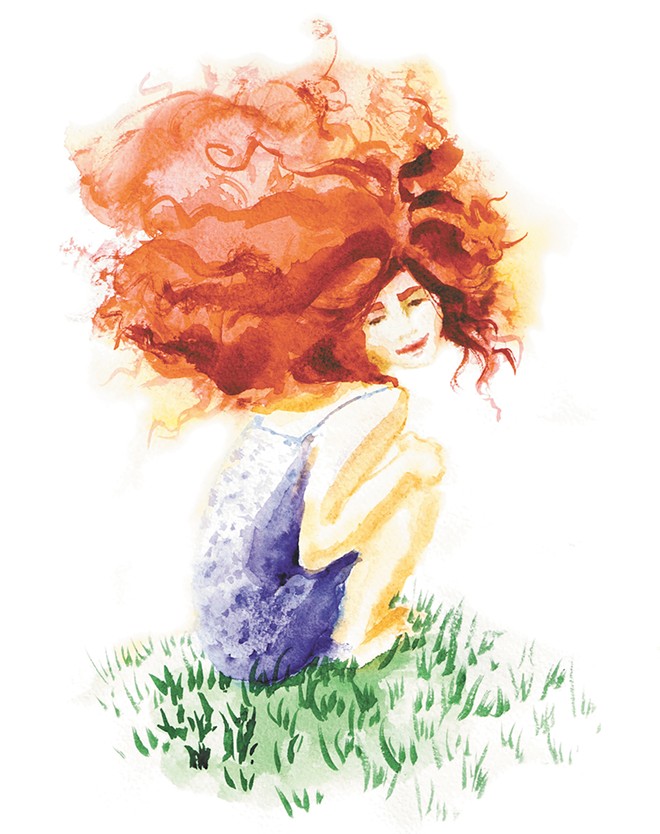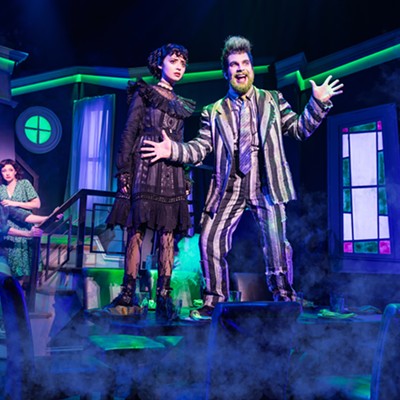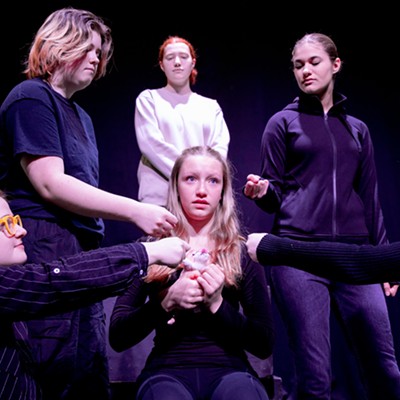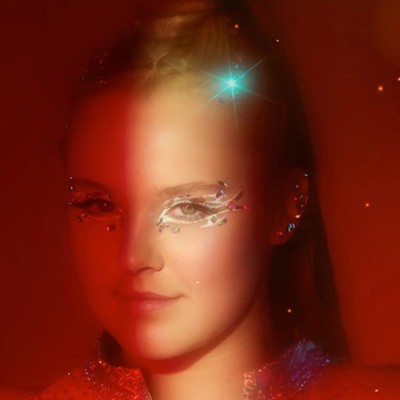When a young man I'll call Daniel first walked into the Northwest Cryobank in downtown Spokane, he didn't realize he'd be in high demand. He'd thought long and hard about donating sperm. He asked his mom for her thoughts. He wondered if he should even contribute to the world's population, but Daniel needed the money to stave off college debt. He also wanted to preserve perhaps his most distinctive genetic trait: his red hair.
Now, the clinic has told Daniel that they wouldn't mind if he gave more samples. His genes are in high demand, as they should be — he is smart, his family health is stellar, he loves the outdoors, and he's a redhead.
His friend initially warned that redheads would soon be roaming the Earth and babies would be popping out of the womb with red ponytails. In reality, though, an army of red-haired children is not likely to result. At only 2 percent of the world population, those with red hair are genetic rarities — because it is a recessive trait, a child requires one red hair gene from each parent. Even then, red hair is not guaranteed.
"I've definitely assumed in my mind that my offspring will have red hair and fair skin," says Daniel, who in his mid 20s. "But I can step back and say, 'Wait, that's almost statistically impossible.' There's also the other half of the genes they are getting."
I am a redhead. Along with this fact comes many conversations, said and unsaid.
As a young kid, teachers would tell me my hair was beautiful and that I was lucky. Fast-forward to middle school, and I wasn't as lucky — it seemed I was placed in the lower registers of the pecking order. In high school, friends reminded me that my kind was known to steal souls. In college, a fellow student once simply referred to me as Red. Peppered throughout these experiences are moments in which sweet cashier ladies and hairdressers say they are jealous of my thick, red hair. Dealing with stereotypes has become only a minor annoyance, and entering adulthood has brought with it curiosity about other redheads' experiences.
The divisive social history of red hair is a long one. Queen Elizabeth I, one of many red-haired queens and kings of England, proudly flaunted her red locks as a symbol of royalty. In fact, during these times, fair skin indicated wealth and prestige, indicating that one did not have to work in the fields.
But instances such as Michelangelo portraying immoral Eve with red hair in the Sistine Chapel and red-haired women being labeled as witches in the 17th century didn't help our cause. More recently, a 2005 South Park episode highlighted the term "ginger" to describe those with red hair, freckles and pale skin — the result of "Gingervitis" disease, which inspired a "Kick a Ginger Day" at one school and other widespread bullying.
From these things spring forth manufactured stereotypes that most, if not all, redheads have heard or been subjected to. Erin Hayes, a Gonzaga student with red hair, grew up in the age of South Park's 2005 ginger episode.
"I hear the stereotype about 'not having a soul' all the time. I've also heard the one, where if I'm in a bad mood, it's because of my red hair — like, 'Your hair is on fire,'" she says.
Labels aside, most red-haired people have an indisputable genetic rarity known for its aesthetic distinctness. In a sea of faces, it's a vessel of disproportionate visibility.
When traveling and living overseas, I have presented various cultures with my novel genetics. In preschool, my family lived in Panama. When we went into banks, office staff would want to hold me and touch my hair and would coo que lindo ("how pretty"). Once, while traveling in Europe, a group of Asian tourists asked to take a photo with me, proud to have come upon such a strange specimen. In Kenya, a group of village children ran up to me and rubbed my hair and freckled skin.
Whether we like it or not, we are not merely people with red hair, we are redheads — situated in a divisive social narrative. To the person with red hair, however, this can be absurd.
"My red hair does set me apart, but it is also just there," Hayes says. "I don't wake up and say to myself, 'I have red hair, what's this day going to be like?' It's just kind of there."
Sometimes Daniel, the sought-after sperm donor, needs the mirror's reminding that he has red hair and red facial hair.
"It hasn't changed the opportunities in my life or how I've lived, and without being egotistical, it's a special thing."
Despite the many negative stereotypes, red hair is apparently desirable to many, especially here in the Northwest. Take, for example, Daniel's NW Cryobank profile, which reads, "You have selected one of our most popular donors."
Compare that to Denmark, where in 2011 Cryos International, the world's largest sperm bank, closed itself off to red-haired sperm donors, explaining it was due to lack of demand. Here in the Northwest, however, it appears the opposite is true. Richard Zimmer, the laboratory and operations manager at NW Cryobank, wishes that more red-haired individuals would donate.
But how about becoming a redhead? Hairdresser Chere Perrigo, the owner of Alexander York Salon in downtown Spokane, says almost no one asks for that. When coloring clients' hair, often red shades pop up as a result from previous dying (not red), and clients are clear that they don't want any hints of red in the finished product.
"Red hair is lovely. Not everybody can rock red hair. There are not many people around who are actually redheads — naturally," says Perrigo.
The minimal requests for red hair she does get are not for natural shades of red hair. They are for eccentric shades, and the artificiality is made obvious. These shades include fire-engine red or, as Perrigo calls it, "bam!-in-your-face red."
Daniel won't single-handedly make a noticeable increase in the world's redheaded population, even if the demand for his sperm seems to indicate otherwise.
In this sense, Daniel's story is part of a pattern in the redhead narrative — the hair can be unique, but it brings some baggage along.
I know how it goes. When the sun is out, my skin is lathered in sunscreen. I don't tan, I freckle. I've survived "Kick A Ginger Day" unscathed. Meanwhile, I practically get celebrity treatment in Asia, Africa and Latin America. I stand out in a crowd; sometimes that's nice, sometimes not so much.
In the future, Daniel might meet a clan of 25 redheads bearing his DNA. That's NW Cryobank's limit for the number of family units one donor can donate to, but he could sire more than 25 if some families want siblings.
"There is a part of me that considers hypothetically meeting the kids in 18 years and them having red hair," Daniel says. ♦





















